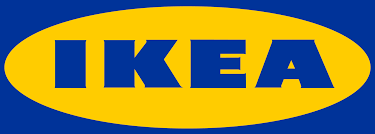IKEA: The Many People Retailer

The IKEA vision: “To create a better everyday life for the many people”
IKEA has taken the world by storm as the largest home furnishings retailer – growing their sales from €12.9B to €29.3B in the past decade. With stores in 27 countries around the globe, they have met the needs of the many people through quality products at affordable prices. But what makes them successful? How has a company founded in the farmlands of Sweden ballooned to a global behemoth? [1]
Business Model
IKEA offers about 12,000 different home furnishing products, ranging from outdoor furniture, to lighting fixtures, to cookware. [2] They pride themselves on providing well-designed, functional products at low cost by shortening the distance between the needs of their customers and the possibilities of their suppliers.
What makes this business model tick is their operating model. IKEA has a hands-on operating model, involving themselves in all parts of the value chain, from range strategy and product development, to production, distribution, and retail. All aspects of the operating model support reducing costs and ultimately price for the consumer, while providing functional, quality products. Key features of their operating model are outlined below:
Product Development
IKEA uses an innovative product development process called democratic design. The idea takes input from designers, material specialists, product developers, and suppliers to create products focused on five elements: form, quality, function, sustainability, and low-price. [1] When designing a new product, IKEA designers are first given a product price point, and then a function to serve. The functions are developed through detailed customer research with the goal of contributing to a better everyday life, while the price is set so it can be affordable to the many. An idea resulting from their design process is the flat pack packaging. This is their well-known packaging that fits everything from bookcases to sofas into a flat package that is easier and cheaper to transport. [1]
Supplier Relationships
IKEA views their 1,002 suppliers in 51 countries as partners for growth. IKEA forms long term partnerships; 11 years on average [1]. These long term partnerships give IKEA greater bargaining power allowing them to drive their costs down even further. Additionally, IKEA works directly with suppliers to improve their own quality and share innovations in technology, production, and materials – all to help reduce costs and increase the quality of products.
Inventory Management
IKEA uses an innovative cost-per-touch inventory process. The theory behind the process is that every time a product has to be touched and moved, costs are incurred. To minimize the amount of times a product is touched, IKEA has included a warehouse inside every IKEA store. When a customer selects an item, they go to the floor pallet location and pick up the product themselves. Additionally, IKEA implements a high-flow/low-flow warehouse system. It’s high-flow warehouses hold about 20% of SKUs that account for 80% of the volume. These warehouses use automatic storage and retrieval systems, while the low-flow warehouses leverage more manual processes. This system allows IKEA to reduce costs-per-touch for high-yield products and use manual workers for low-yield products that won’t move as much, ultimately reducing costs. [4]
Implications for Performance
All aspects of IKEA’s operating model support two major pieces of the business model: affordable prices and functional products. Through democratic design, they meet the specific needs of the customer, while cost is interlaced into every operating decision they make. The result – a powerhouse retailer. Not only are they continuing to grow in new markets, but their focus on low costs allows them to do it profitably. In 2014, they achieved a net income of €3.3B on €29.3B revenue. With a tightly aligned business and operating model and an unrelenting commitment to their vision, IKEA is the one to beat in the home furnishings industry. [1]

Sources
[1] http://www.ikea.com/ms/en_US/pdf/yearly_summary/Yearly_Summary_FY14.pdf
[2] multiple pages from http://www.ikea.com
[3] http://money.howstuffworks.com/ikea1.htm
[4] https://www.tradegecko.com/blog/ikeas-inventory-management-strategy-ikea




Scott – really interesting read, I didn’t know about the long term supplier relationships Ikea has built. I wonder how Ikea are viewing changing customer habits? Check out my article on Wayfair about the many options ecommerce provides modern consumers who want a huge variety at a range of price points, with more convenience. Are you worried that Ikea’s ‘cost-per-touch’ model is out of date, as customers become more and more used to perks such as free shipping and returns?
Emma
Great post, Scott! It’s interesting that designers are given a final product price point to keep in mind as they make their designs. I imagine that this restricts their process, but I wonder how much leeway they have with this. I’m reminded of the NIC + ZOE case — who runs the show in the IKEA design studio, designers or someone else? As a Swedish company where furniture design emphasizes functionality and beauty, I wonder how they balance these two priorities.